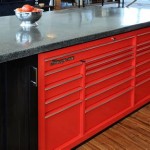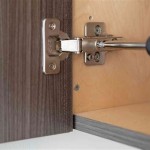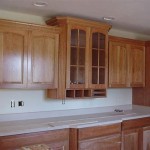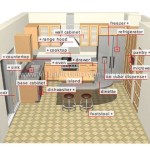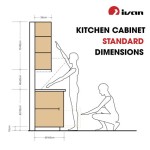Here's an article focusing on modern green kitchen design, following the specified guidelines: ```html
Modern Green Kitchen Design: A Blend of Sustainability and Style
Modern green kitchen design transcends fleeting trends, representing a commitment to environmental responsibility and a desire for healthy living. It integrates eco-conscious materials, energy-efficient appliances, and resource-conserving practices without sacrificing aesthetic appeal. This approach results in kitchens that are not only visually stunning but also contribute to a smaller environmental footprint. A well-executed green kitchen benefits both the homeowner and the planet.
The fundamental principle of green kitchen design involves making informed choices at every stage of the remodeling or building process. From selecting sustainable cabinetry to opting for low-VOC paints, each decision plays a crucial role in creating a truly eco-friendly space. The process extends beyond mere aesthetics, demanding a holistic understanding of materials, energy consumption, and waste management.
Sustainable Materials: Building a Foundation for Green Design
The selection of materials is paramount in green kitchen design. Traditional construction often relies on materials with significant environmental impact, from deforestation to the emission of harmful chemicals. Sustainable alternatives offer a viable solution, reducing the environmental burden while maintaining or even enhancing the kitchen's aesthetic qualities.
Bamboo is a rapidly renewable resource that has become a popular choice for cabinetry, flooring, and even countertops. Its fast growth rate and minimal water requirements make it an environmentally responsible selection compared to hardwoods. Bamboo also possesses inherent strength and durability, ensuring a long lifespan in a kitchen environment.
Reclaimed wood, sourced from old barns, factories, or other structures, provides a unique and character-rich alternative to newly harvested timber. Using reclaimed wood conserves forests, reduces landfill waste, and introduces a distinctive, often rustic, charm to the kitchen design. The inherent imperfections and history of reclaimed wood add depth and visual interest that is difficult to replicate with new materials.
Recycled glass countertops are another increasingly common option. Composed of post-consumer glass fragments embedded in a resin or cement matrix, these countertops divert waste from landfills and offer a visually striking surface. They are available in a wide range of colors and textures, allowing for significant design flexibility.
Linoleum, made from natural materials like linseed oil, cork dust, wood flour, and rosin, is a durable and biodegradable flooring option. It is naturally antimicrobial and resistant to wear, making it a practical choice for high-traffic kitchen areas. Modern linoleum is available in a vast array of colors and patterns, allowing designers to achieve a variety of aesthetic styles.
Beyond the primary building materials, consider using low-VOC (volatile organic compound) paints and finishes. Traditional paints release harmful chemicals into the air, contributing to indoor air pollution. Low-VOC options minimize these emissions, creating a healthier environment for both the occupants and the planet.
Energy Efficiency: Minimizing Consumption and Environmental Impact
Energy consumption is a significant factor in the overall environmental impact of a kitchen. Choosing energy-efficient appliances and employing smart design strategies can significantly reduce energy usage and lower utility bills.
Energy Star-certified appliances are designed to consume less energy than standard models. From refrigerators and dishwashers to ovens and cooktops, Energy Star appliances meet strict energy efficiency guidelines set by the Environmental Protection Agency (EPA). While the upfront cost may be slightly higher, the long-term savings in energy consumption often outweigh the initial investment.
LED lighting is another essential component of an energy-efficient kitchen. LED bulbs consume significantly less energy than incandescent or fluorescent lighting and have a much longer lifespan. They are also available in a wide range of color temperatures, allowing for customized lighting schemes to suit different tasks and preferences.
Natural light is an invaluable resource that should be maximized in a green kitchen design. Strategically placed windows and skylights can reduce the need for artificial lighting during the day, saving energy and creating a brighter, more inviting space. Consider the orientation of the kitchen to maximize sunlight exposure while minimizing heat gain in warmer climates.
Proper insulation is crucial for maintaining a consistent temperature in the kitchen and reducing energy waste. Insulating walls, ceilings, and floors helps prevent heat loss in the winter and keeps the kitchen cooler in the summer, reducing the need for excessive heating or cooling.
Consider installing a tankless water heater. These heaters only heat water on demand, eliminating the energy waste associated with traditional tank water heaters that constantly heat and store water, even when it is not needed.
Water Conservation: Reducing Waste and Promoting Responsible Use
Water is a precious resource, and conserving water in the kitchen is an essential aspect of green design. Implementing water-saving fixtures and adopting responsible water usage habits can significantly reduce water consumption and lower water bills.
Low-flow faucets and showerheads are designed to restrict water flow without compromising water pressure. They use aerators to mix air with water, creating a satisfying spray while reducing water consumption. Look for WaterSense-certified fixtures, which meet EPA standards for water efficiency.
Energy Star-certified dishwashers are not only energy-efficient but also water-efficient. They use sensors to determine the appropriate amount of water needed for each load, minimizing water usage compared to older models.
Consider installing a dual-flush toilet in an adjacent powder room, if applicable. Dual-flush toilets offer two flushing options: a full flush for solid waste and a half flush for liquid waste, conserving water when a full flush is not necessary.
Be mindful of water usage habits in the kitchen. Turn off the faucet while brushing your teeth or washing dishes, and repair any leaks promptly. Small leaks can waste significant amounts of water over time.
Consider a greywater system. Although more complex to install, greywater systems recycle water from sinks, showers, and laundry for non-potable uses such as watering plants or flushing toilets (where permitted by local codes). This further reduces the demand on potable water supplies.
In addition to these key points, consider installing a water filtration system to reduce the need for bottled water, further minimizing your environmental impact.
Adopting modern green kitchen design principles requires careful planning and a commitment to sustainability. By prioritizing eco-conscious materials, energy efficiency, and water conservation, homeowners can create kitchens that are both beautiful and environmentally responsible. The result is a space that not only enhances the quality of life but also contributes to a healthier planet for future generations.
The integration of smart home technology can further enhance the green credentials of a kitchen. Smart thermostats can optimize heating and cooling, while smart lighting systems can adjust automatically based on occupancy and ambient light levels. These technologies provide valuable data on energy consumption, allowing homeowners to make informed decisions about how to reduce their environmental impact.
Ultimately, a successful modern green kitchen design is a balance between functionality, aesthetics, and environmental responsibility. It's a reflection of a conscious choice to live in harmony with the planet, creating a space that is not only beautiful and functional but also sustainable and healthy.
```
7 Modern Green Kitchen Cabinets To Elevate Your Space Naturally

19 Modern Green Kitchen Design Ideas You Should Try In 2025

Top Green Kitchen Design Ideas 2024 My Specialist

Green Kitchen Cabinets A Detailed Exploration Oppein

Green Kitchens Kitchen Ideas Magnet

Green Lacquer Handleless Kitchen Cabinet Cabinets

Modern Color Splash Gorgeously Green Kitchen Cabinets That Usher In Warmer Months Decoist

Refreshing Green Kitchen 3d Design

Green Kitchens 33 Inspiring Kitchen Ideas

10 Green Kitchen Cabinet Ideas For Your Home Designcafe
Related Posts


